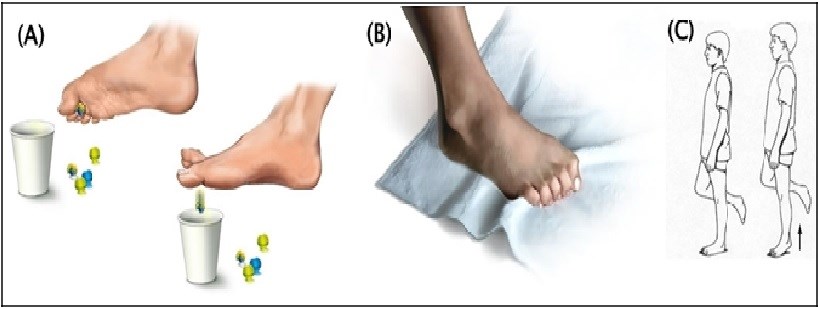Do you have sharp pain in your feet? It hurts to stand when you get out of bed, or you experience pain while walking? This can be plantar fasciitis.
Plantar Fasciitis is an inflammatory condition that causes intense heel pain. Calcium deposits may eventually form on the heel resulting in mild to severe pain.
Some of the main causes can be from over-stretching the plantar fascia ligament which stretches from the heel to the ball of the foot and supports your arch; or from flat feet, high arches that pull on muscles, tight calf muscles form poor stretching, muscle tension that pulls away a piece of the bone, increased activity, aging, athletic activity, poor support shoes, large weight gain in a short time, running on hills or balls of feet, running on uneven surface.
Stretching and warming up is a huge benefit to people with plantar fasciitis.
Factors that can cause plantar pain:
- Occupations involving prolonged standing such as teachers or cooks do, construction work
- Poor biomechanics and over-training
- Running with a heel plant lead vs a toe plant
- Repetitive stress that exceeds recovery, leading to degenerative changes in the plantar fascia
Tips on How To Reduce It:
- Walk barefoot on uneven terrain – this helps strengthen every angle of the foot since the feet are now able to receive a wealth of sensory input. The increased sensory input activates reflexes in the foot, which in turn, strengthens soft tissue and the plantar fascia. Discomfort may arise, but relax your feet and walk as normal as possible, your feet will adapt very quickly.
- Make sure shoes are supportive and not worn down.
- Use insoles that support your arch and reduce tension on the ligament.
- Use a heel pad/cushion/lift to help relieve pressure and reduce inflammation.
- Correct any leg length discrepancy via a heel lift will be beneficial
- Use heel cup to add extra shock absorption, which reduces pressure.
- Do calf stretches everyday
- Avoid running, low-impact cardio is best – cycling, elliptical, rowing, swimming.
- Ice massage nightly
- Maintain length of calf by using a night splint
- Strengthen leg muscles
- Maintain a healthy weight.
- Use acupressure
- Don’t stand on hard surfaces for lengthy periods of time.
Towel Toes – lay a tea towel or hand towel out on the floor. With bare feet, start at the front edge of the towel and scrunch the toes to gather the towel up in a bunch. Once it’s all collected, repeat for 3 or 4 sets.
Marble Pick Up – get two sizes of marbles – the big crocker, and the little marble. Try and pick up the marble with your toes cycling through each toe there and back. Repeat with the large crocker. Change feet. Repeat for 3 sets
Single Leg Calf Raise – Stand on one foot and raise up on ball of foot. Repeat for 10 raises, change legs. Do 3 sets.
Sand Box – put play sand (you can buy it by the bag from Home Depot) and place it in a square tub deep enough to sink your feet into it and bury them. Wiggle your toes around as if you’re trying to move the sand around. Do this for 2-3 minutes resting as needed.
Achilles stretch – stand in front of a wall with hands on the wall for support. Perform a calf stretch on the back leg by keeping it straight ensuring to keep heels flat on the floor– feel the stretch. Hold for 30 seconds. Now bend your knee on that leg so the stretch moves from the back of the knee and calf down to the Achilles tendon. Hold for 30-60 seconds a side, again making certain to keep the heel down.
Towel stretch - Sit tall as you place the affected foot on a towel on the floor. Using your toes, tuck or pull the towel towards you. Afterwards, push the towel away, also through your toes. Repeat the exercise until fatigued. As your strength improves, place a weighted object, such as a can of soda, on the other end of the towel.
Toe Tapping – with bare feet tap the big toe and move to the index toe and then down the line. Then move back up the line in reverse order. The key here is to try to tap each toe individually without drawing in movement from the other toes. Repeat for 3-4 sets, switch feet.
Cross-Tissue Massage - After you’ve completed your exercises, do a cross-tissue massage with your thumbs. Move from one side of the foot to the other side covering the area of the arch. Move up and down in line with the tissue direction as well to help lengthen. Do this for about 3 minutes a foot, longer if you like.
Icing – freeze a water bottle filled 3/4 full of water. After you have completed your exercises and cross-tissue massage, roll the bottom of your feet on the water bottle for 10 minutes each foot. Refreeze bottle. Use 2 bottles to save time.
Yours in foot health!



